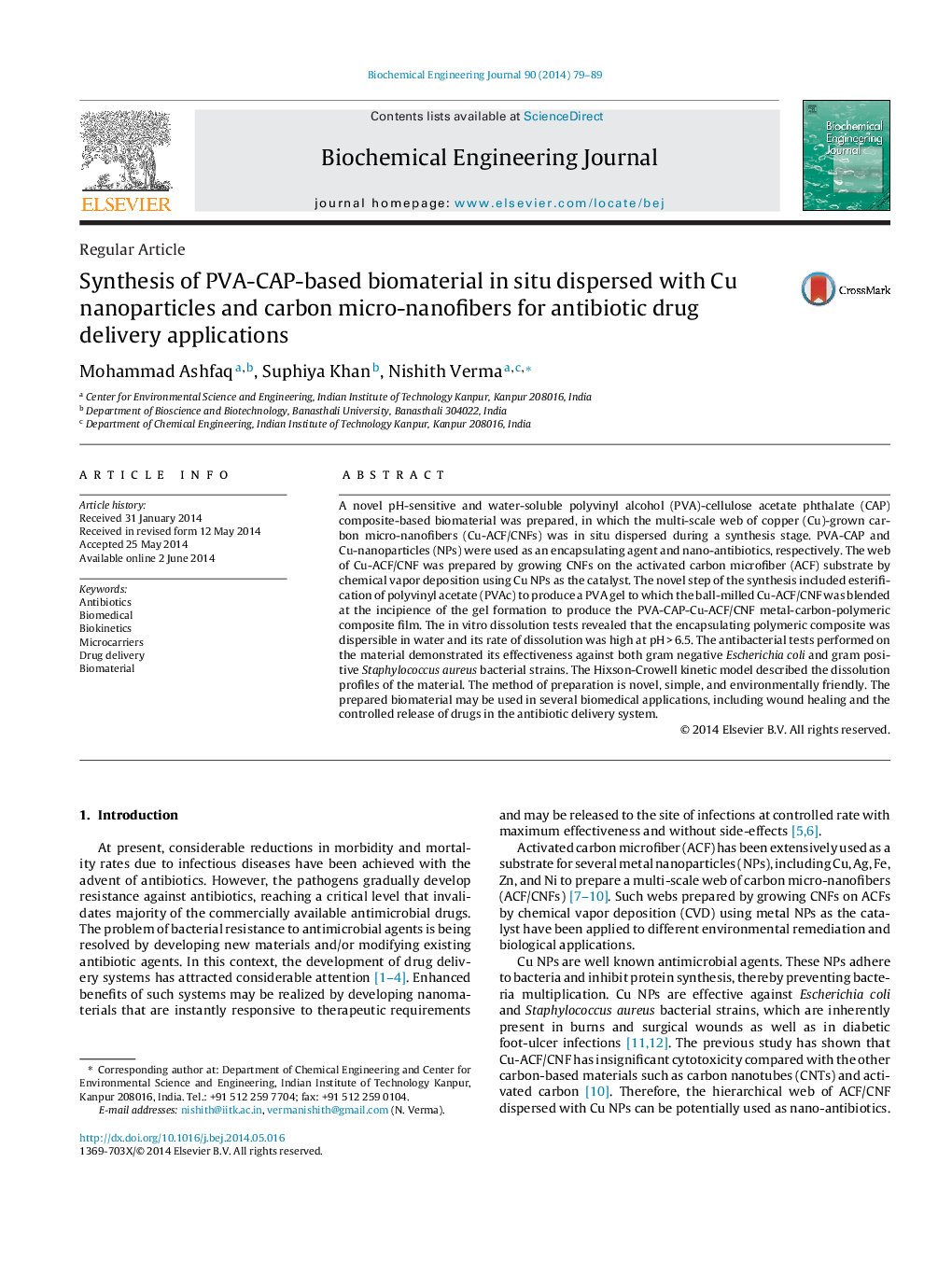| کد مقاله | کد نشریه | سال انتشار | مقاله انگلیسی | نسخه تمام متن |
|---|---|---|---|---|
| 2996 | 147 | 2014 | 11 صفحه PDF | دانلود رایگان |

• A polymer-metal nanoparticle-carbon nanofiber composite is synthesized.
• The encapsulating material is pH sensitive and water dispersible.
• The prepared material exhibits control release of Cu-ACF/CNF.
• Hixson-Crowell kinetic model explained the dissolution profiles of the material.
• The composite material can be potentially used in drug delivery applications.
A novel pH-sensitive and water-soluble polyvinyl alcohol (PVA)-cellulose acetate phthalate (CAP) composite-based biomaterial was prepared, in which the multi-scale web of copper (Cu)-grown carbon micro-nanofibers (Cu-ACF/CNFs) was in situ dispersed during a synthesis stage. PVA-CAP and Cu-nanoparticles (NPs) were used as an encapsulating agent and nano-antibiotics, respectively. The web of Cu-ACF/CNF was prepared by growing CNFs on the activated carbon microfiber (ACF) substrate by chemical vapor deposition using Cu NPs as the catalyst. The novel step of the synthesis included esterification of polyvinyl acetate (PVAc) to produce a PVA gel to which the ball-milled Cu-ACF/CNF was blended at the incipience of the gel formation to produce the PVA-CAP-Cu-ACF/CNF metal-carbon-polymeric composite film. The in vitro dissolution tests revealed that the encapsulating polymeric composite was dispersible in water and its rate of dissolution was high at pH > 6.5. The antibacterial tests performed on the material demonstrated its effectiveness against both gram negative Escherichia coli and gram positive Staphylococcus aureus bacterial strains. The Hixson-Crowell kinetic model described the dissolution profiles of the material. The method of preparation is novel, simple, and environmentally friendly. The prepared biomaterial may be used in several biomedical applications, including wound healing and the controlled release of drugs in the antibiotic delivery system.
Figure optionsDownload as PowerPoint slide
Journal: Biochemical Engineering Journal - Volume 90, 15 September 2014, Pages 79–89